Highlights include articles on Columbus’ mosquitoes, a 25-year update on the Glen Echo stabilization plan, plans for restoring the Glen Echo mural, and how to control invasive lesser celandine.
Highlights include articles on Columbus’ mosquitoes, a 25-year update on the Glen Echo stabilization plan, plans for restoring the Glen Echo mural, and how to control invasive lesser celandine.
This ravine is found at Highbanks Metro Park; according to employees the stream has no official name. An 1856 Atlas of Delaware County shows it as “Spring Run” but other atlases since then show no name.
It flows into the Olentangy River. A trail that begins next to the nature center crosses over the stream via the bridge shown in the photo. The ravine walls and base of the stream are composed of many layers of oil shale.
Looking down from the bridge. Visitors are allowed to leave the trail to explore the stream.
Closeup of a wall of shale.
Water flow draining from the previous flood plain on the deposit side of the stream has created an alluvial fan.
False Solomon’s seal or Solomon’s Plume (Maianthemum racemosum) next to jewelweed.
A granite erratic, carried along by the former glaciers that created this stream, and featuring a circular hole probably created by dripping water.
Photos by Ellie Nowels, June 2021
Rush Run has its headwaters in a retention pond north of I-270, then travels south to 161, turning southeast on its way to the Olentangy River, where it is surrounded by a Columbus Recreation and Parks nature preserve.
Photos were taken in the summer of 2020 by Ellie Nowels.
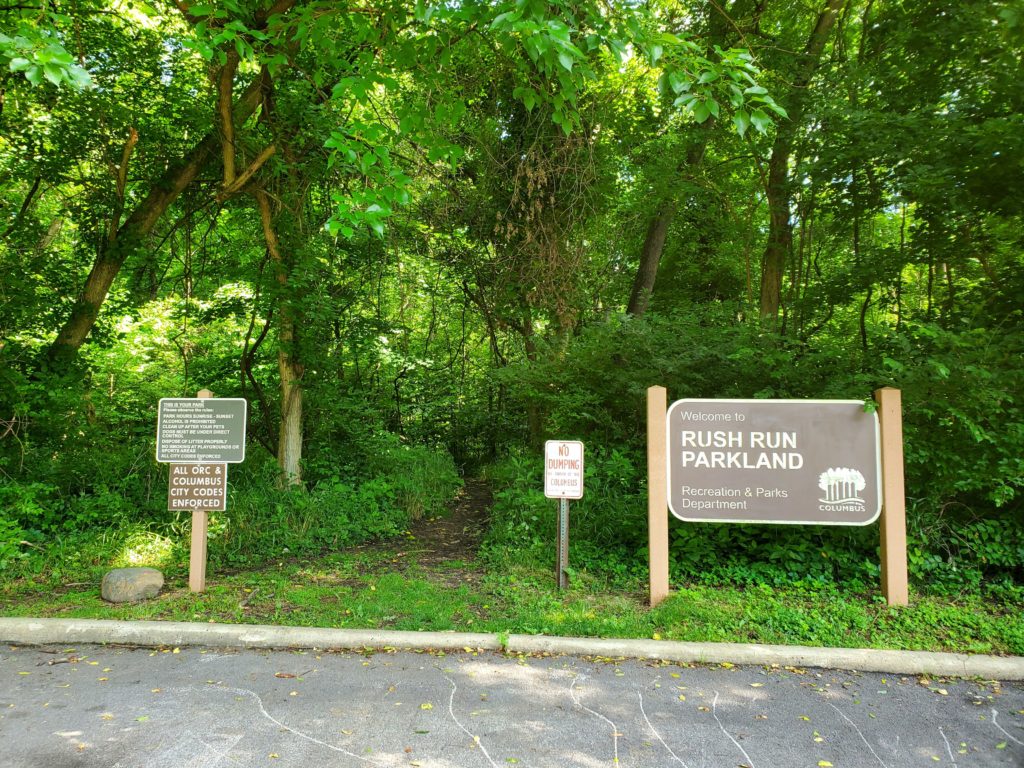
Entrance to the park is found behind the rental office of Broadmeadows apartments.
Just beyond the trees is the confluence with the Olentangy River.
One of several small tributaries in the parkland.
Still walking eastward, the path on the south side ends right before the western end of Walnut Grove Cemetery. A large sewer pipe crosses the stream here; on the north side, the park continues into the village of Riverlea, with a number of walking paths in the woods.
This is the section of Rush Run that runs between Proprietors and McCoy roads. The stream bed and ravine walls are primarily shale throughout this section.
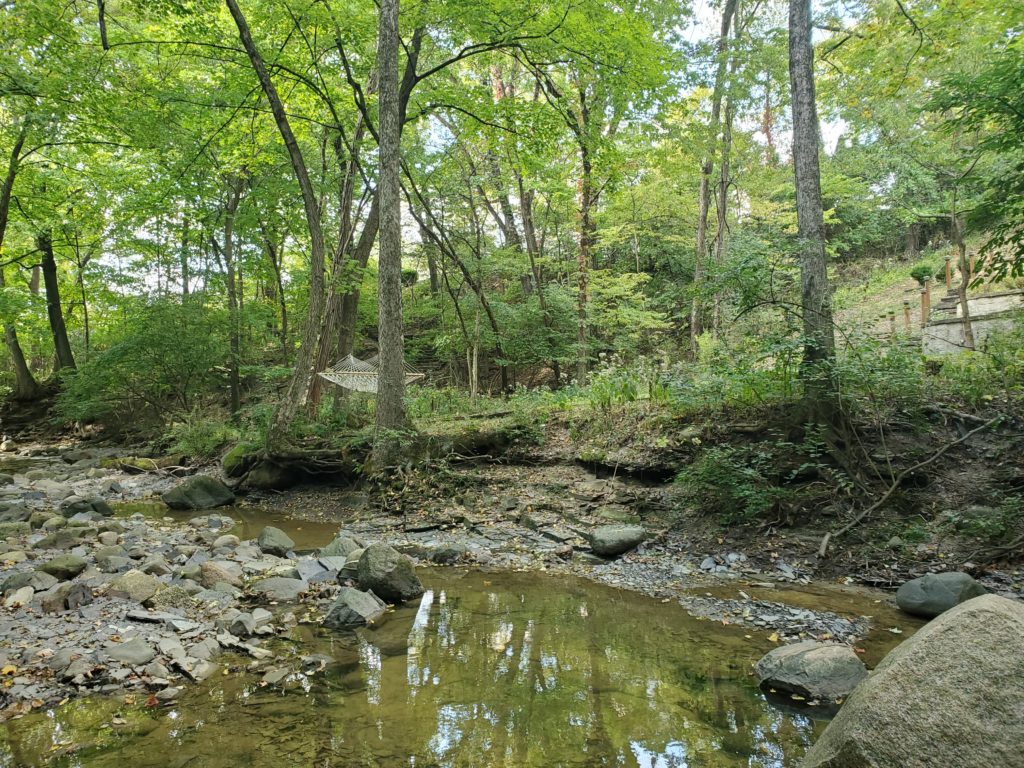
Property owners along this section (Proprietors to McCoy) enjoy this natural treasure.
Fractures and moss give texture to the shale walls.
Plenty of food for the wildlife!
As you approach the culvert under 161 just east of Proprietors Road, there is plenty of evidence of human activity.
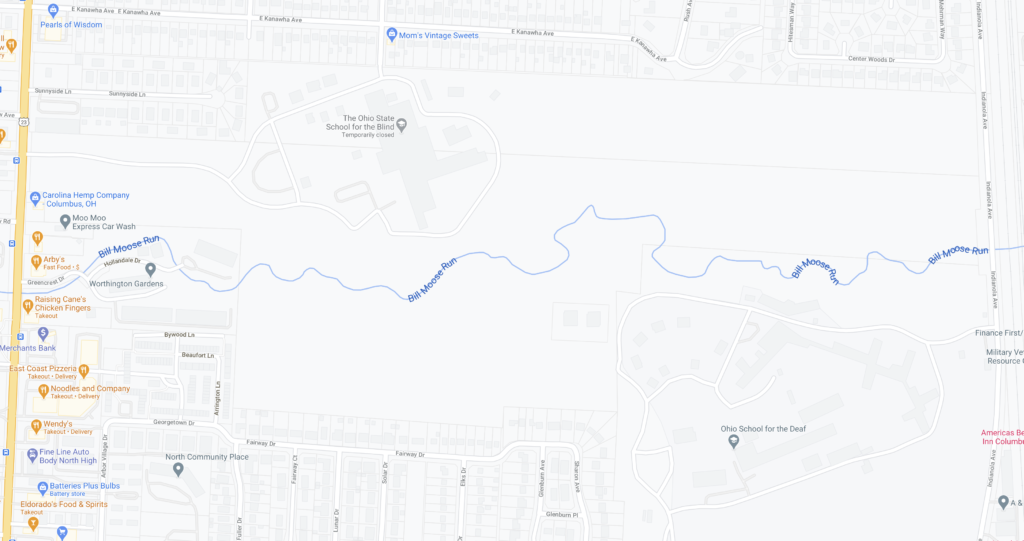
October, 2020 – photos by Ellie Nowels
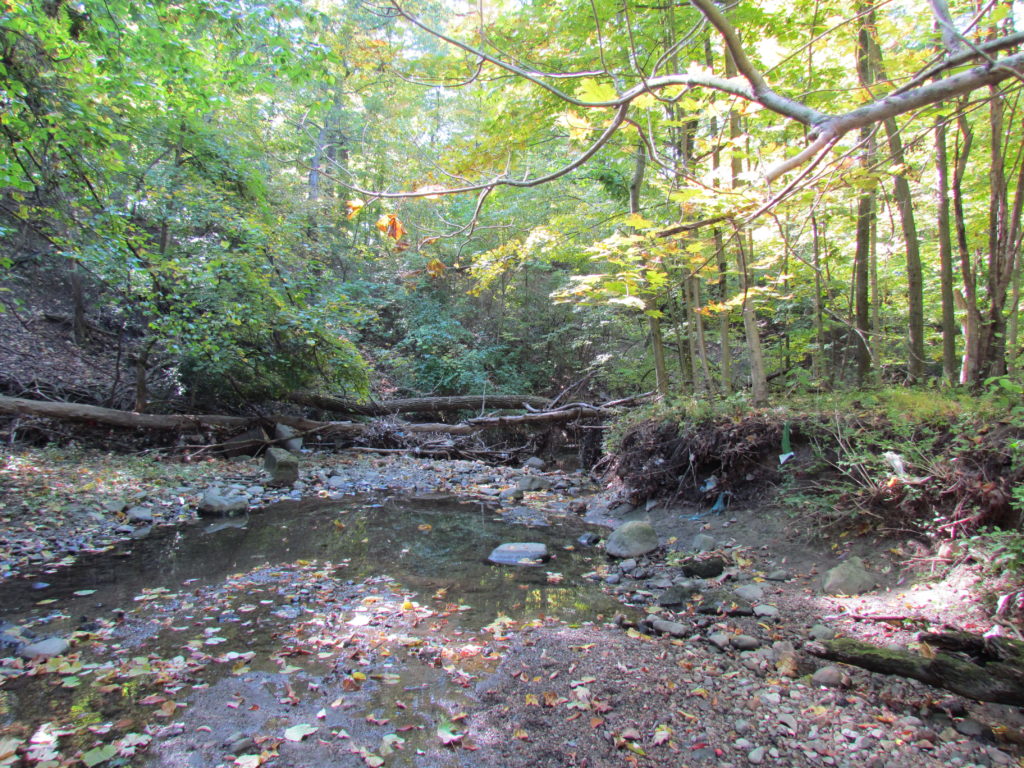 This area of the stream does have some invasives but also good stands of hardwood. There is a good amount of riparian woodland on both sides of the stream for the majority of the length of this section.
This area of the stream does have some invasives but also good stands of hardwood. There is a good amount of riparian woodland on both sides of the stream for the majority of the length of this section.
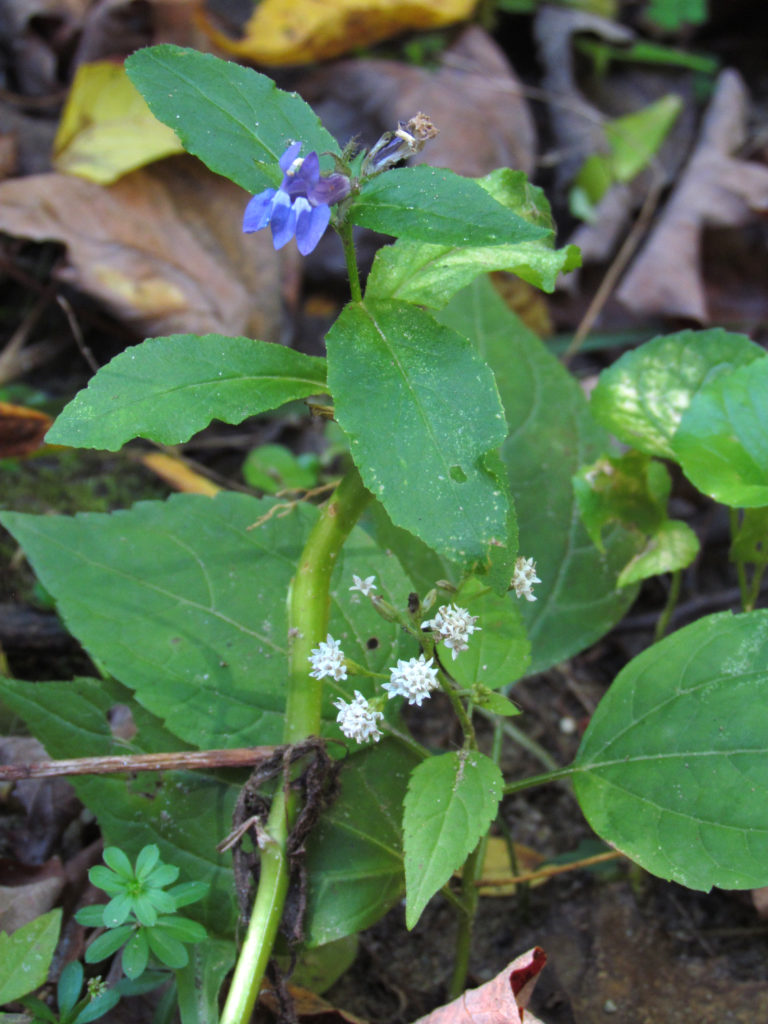 Very few flowers were evident (early October), but this great blue lobelia and white snakeroot were still hanging on.
Very few flowers were evident (early October), but this great blue lobelia and white snakeroot were still hanging on.
 Erosion is intense in some areas.
Erosion is intense in some areas.
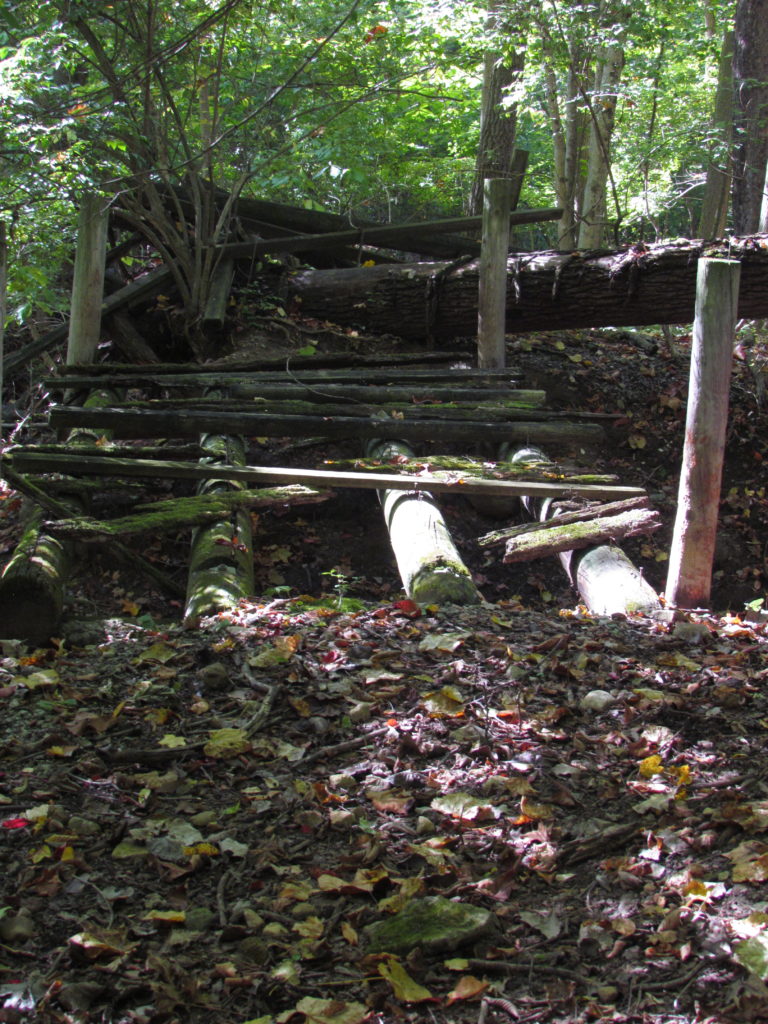 There are a number of abandoned bridges or other structures along the way; this is near the Blind School and goes over a small sub-tributary.
There are a number of abandoned bridges or other structures along the way; this is near the Blind School and goes over a small sub-tributary.
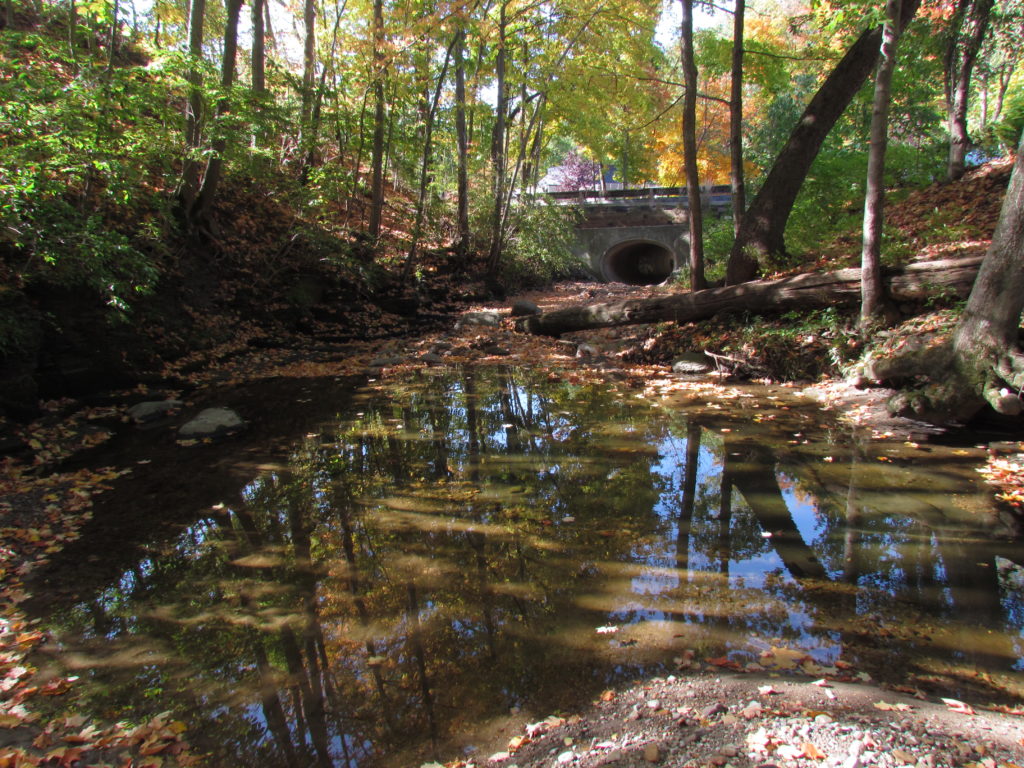 Not until it approaches the Worthington Gardens apartments does the gravel and sediment base give way to a shale base.
Not until it approaches the Worthington Gardens apartments does the gravel and sediment base give way to a shale base.
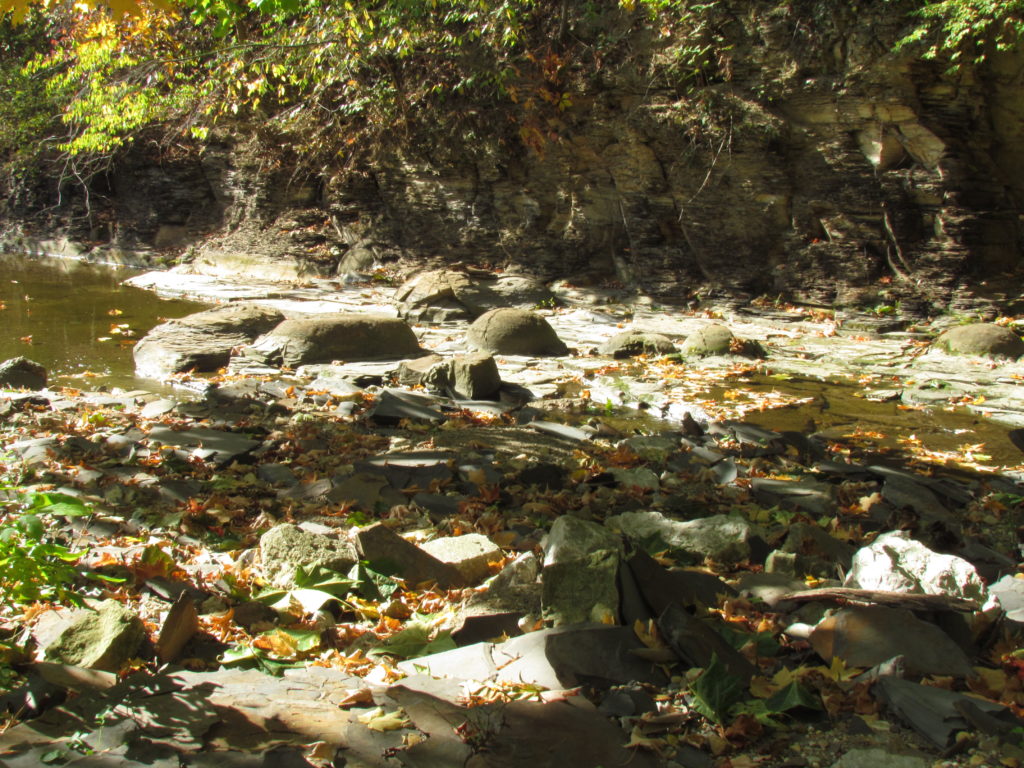 Many concretions can be found in the stretch that goes through the apartments. The channel is narrower here and the walls show the ancient shale layers.
Many concretions can be found in the stretch that goes through the apartments. The channel is narrower here and the walls show the ancient shale layers.
Walhalla is a ravine in Clintonville that follows a street by the same name. It is only visible from just east of High St. to Indianola; the rest has been channeled underground.
July, 2020 – photos by Ellie Nowels
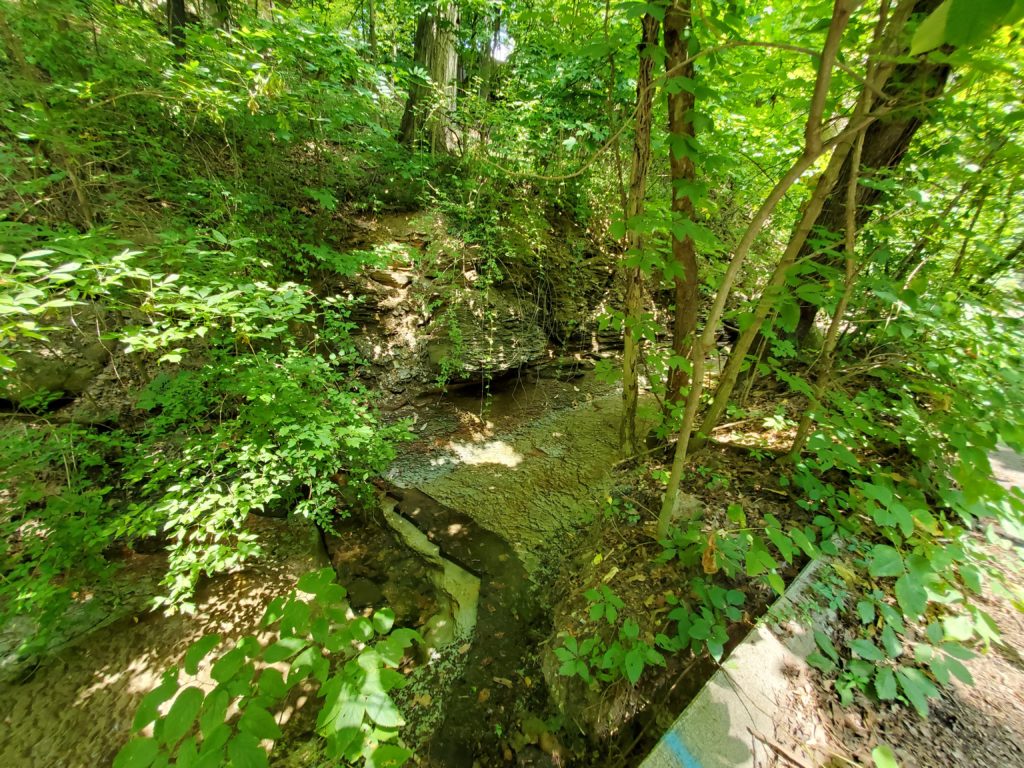
This section has a wall to separate the stream from the road.
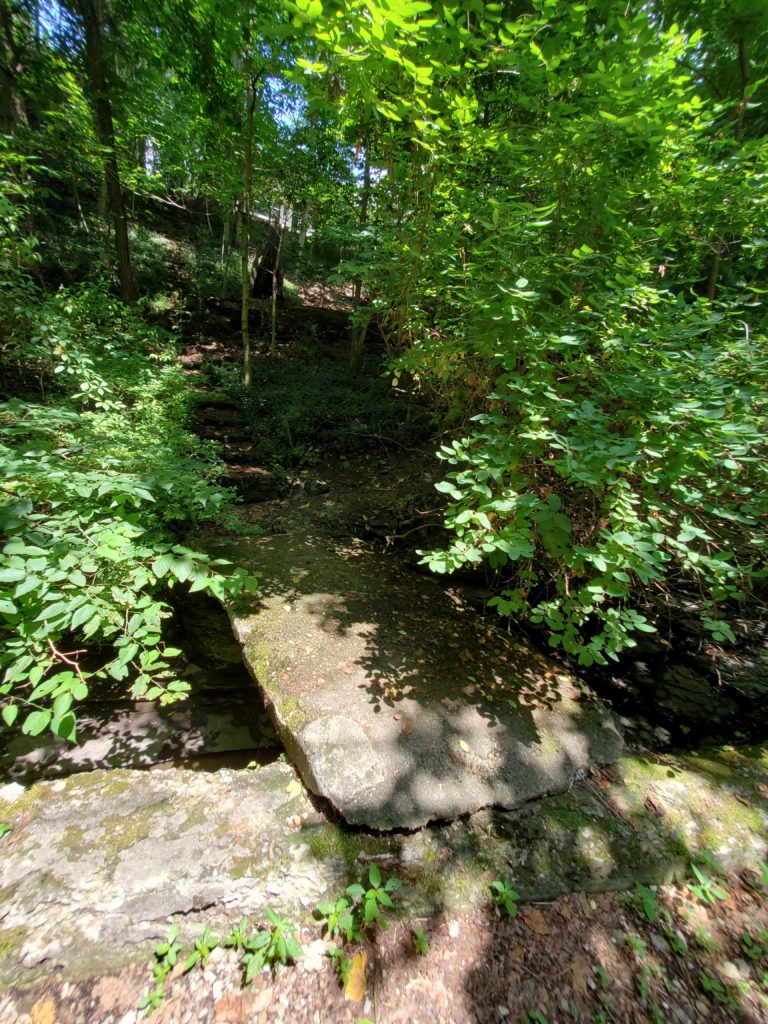
Most homes don’t front on Walhalla but rather have very steep back yards. Some like this have some homemade steps or bridges to connect them to the street.
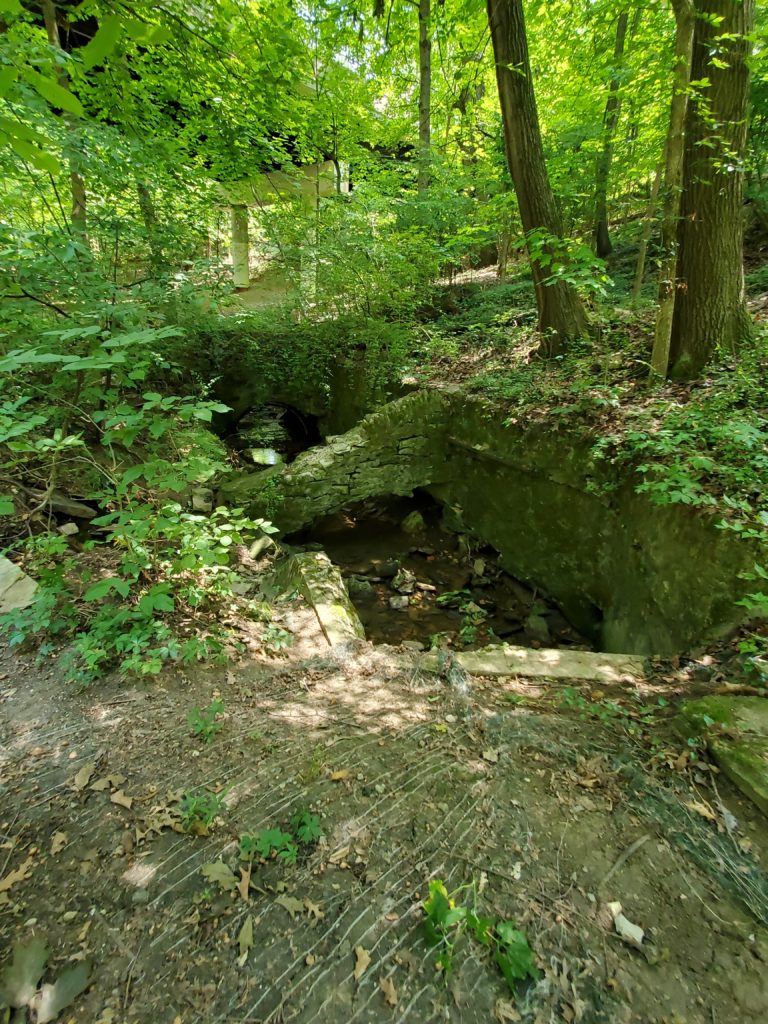
The stream runs mostly north of the road, but crosses under the road to follow it on the south side for a bit.
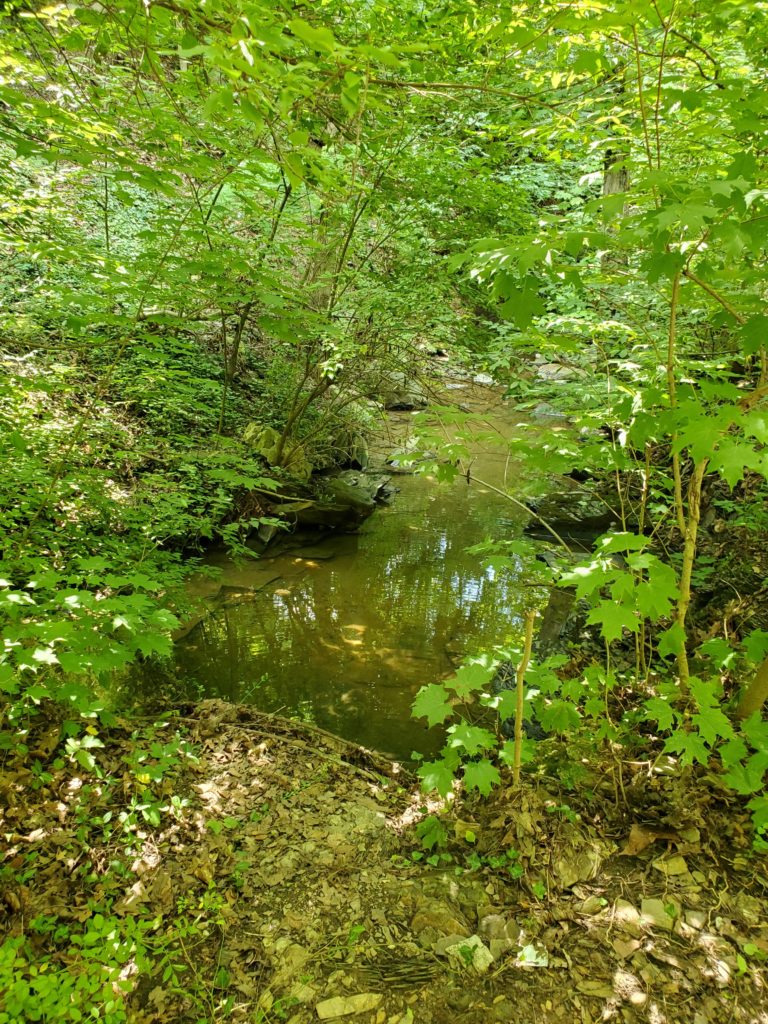
The stream runs quite close to the roadway.
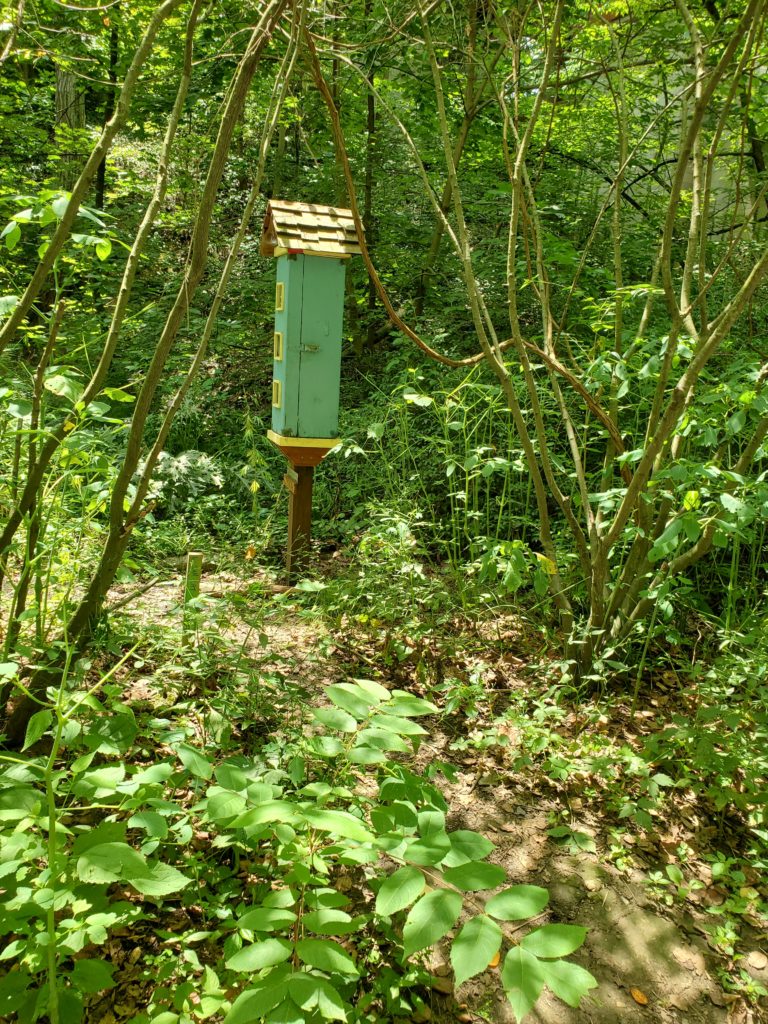
A Little Free Library. There’s a roadside path just in this small area, but since there are no sidewalks you mostly have to walk in the road.
There are 19 nature preserves in Franklin County that are owned by Columbus Recreation and Parks. This is one that is quite small and not well known. Old Beechwold is accessed from North High St. a little bit south of Graceland Shopping Center and Kenney Park, and is a neighborhood of stately homes, mature trees (beech and others), and lovely gardens. This unnamed tributary is channelized at the east end (at Rustic Bridge) and flows into the Olentangy. It’s a small park, unmarked, with foot access at Rustic Bridge and on Riverview where it curves into Olentangy Blvd. The stream isn’t shown on USGS topography maps or on Google maps, but it was flowing even in the middle of a dry summer.
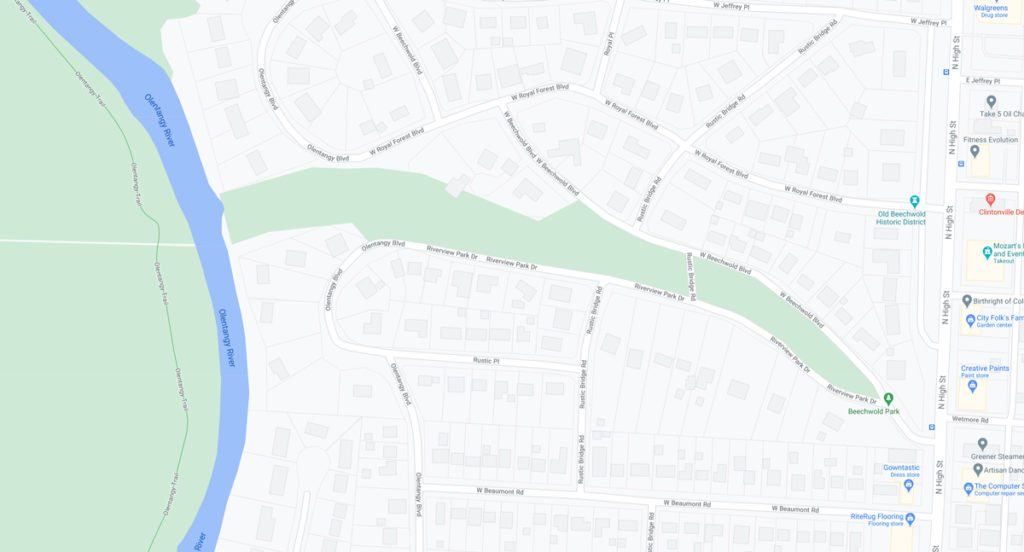
July, 2020 – Photos by Ellie Nowels
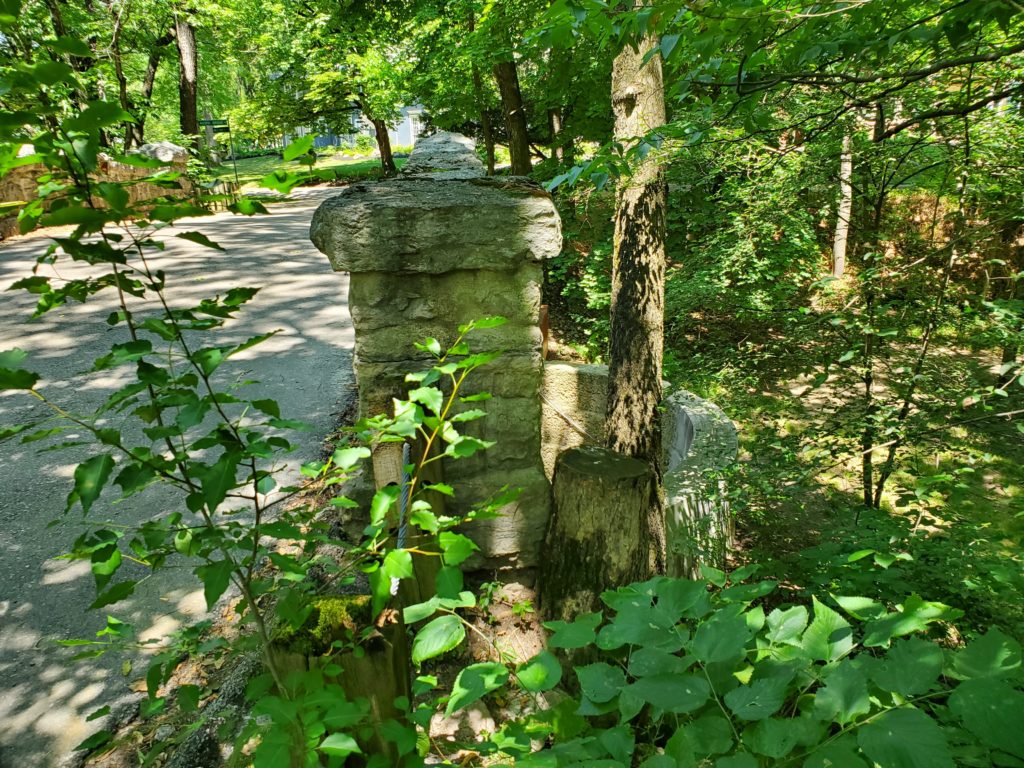 This is the east end of the preserve; the stream is channelized from the Rustic Bridge east to its point of origin.
This is the east end of the preserve; the stream is channelized from the Rustic Bridge east to its point of origin.
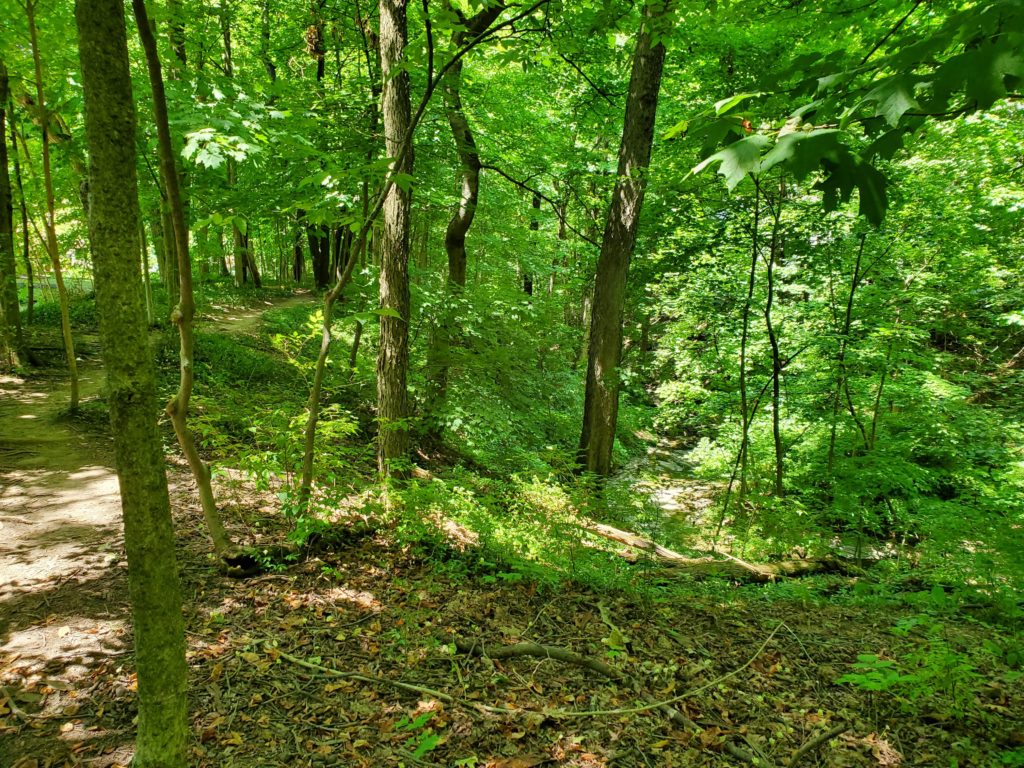 You can follow the dirt path at the top of the hill or climb down into the ravine to walk in the stream.
You can follow the dirt path at the top of the hill or climb down into the ravine to walk in the stream.
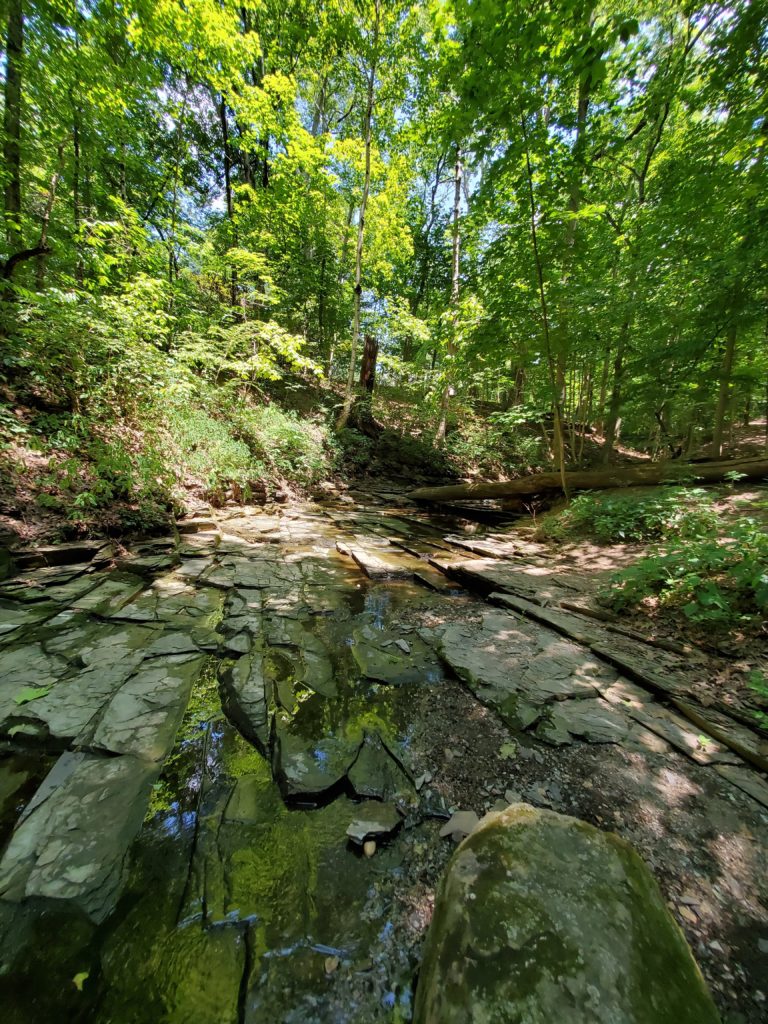 A shale-lined stream bed makes for a lovely walk.
A shale-lined stream bed makes for a lovely walk.
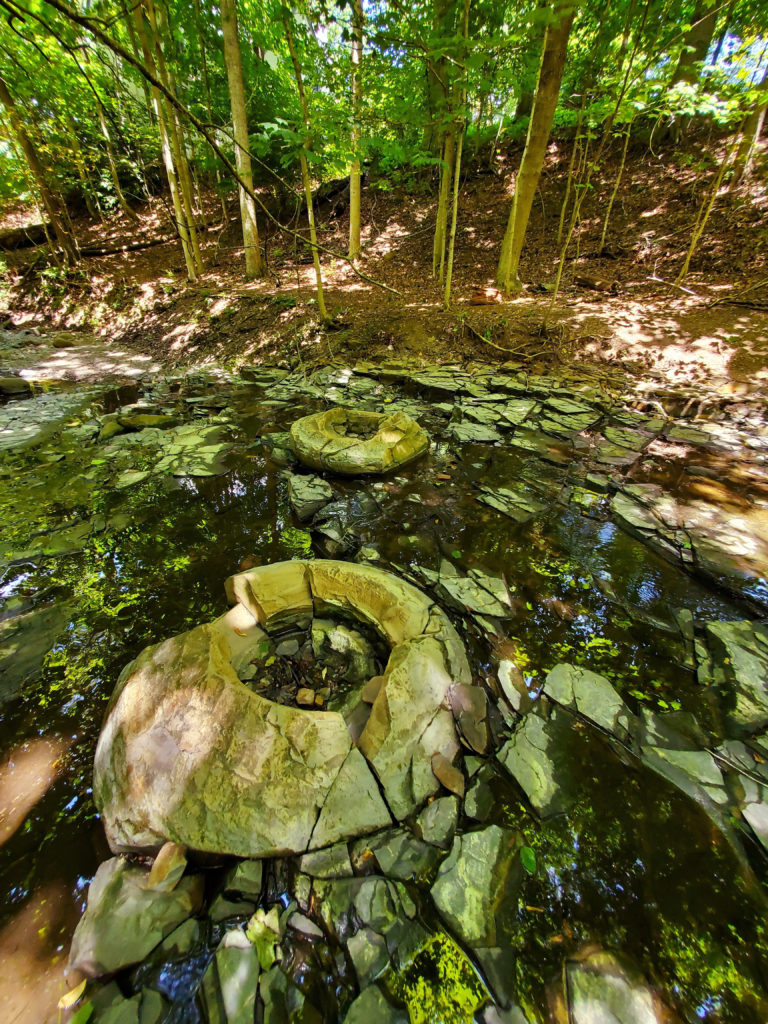 A number of nice concretions in the stream bed.
A number of nice concretions in the stream bed.
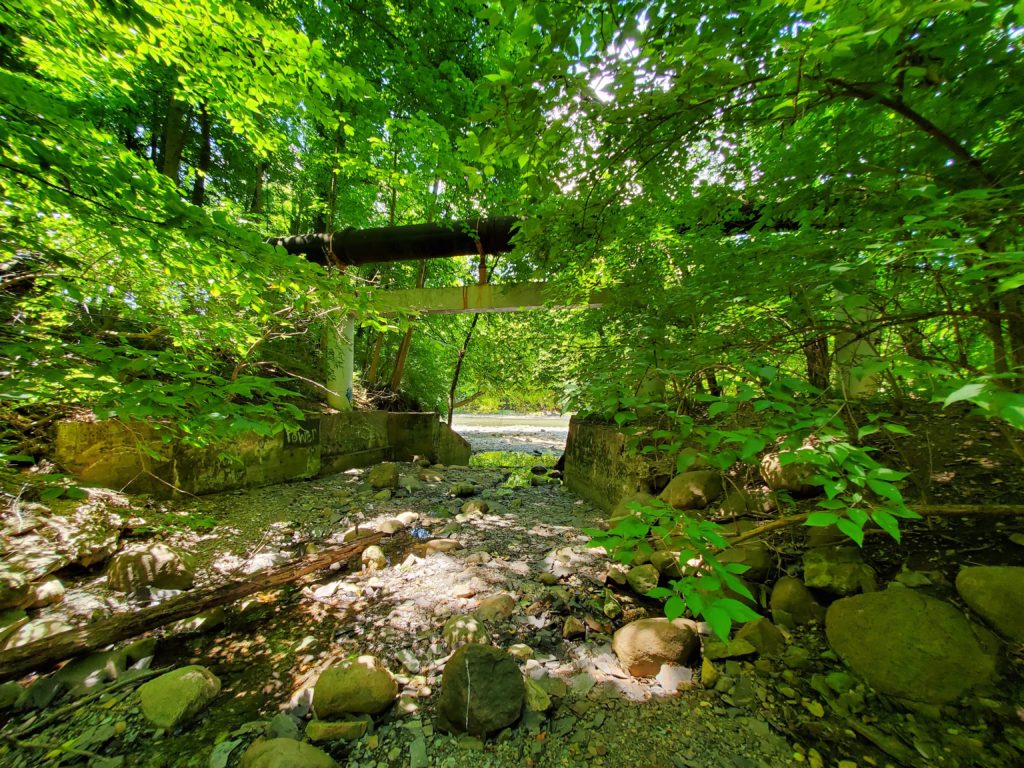
Where the stream enters the Olentangy it passes under some sewer pipes. There are no public pathways north or south along the river bank.
Photos from the section of Bill Moose Run between its confluence with the Olentangy River and where it enters the tunnel under North High St.
July, 2020 – Photos by Ellie Nowels
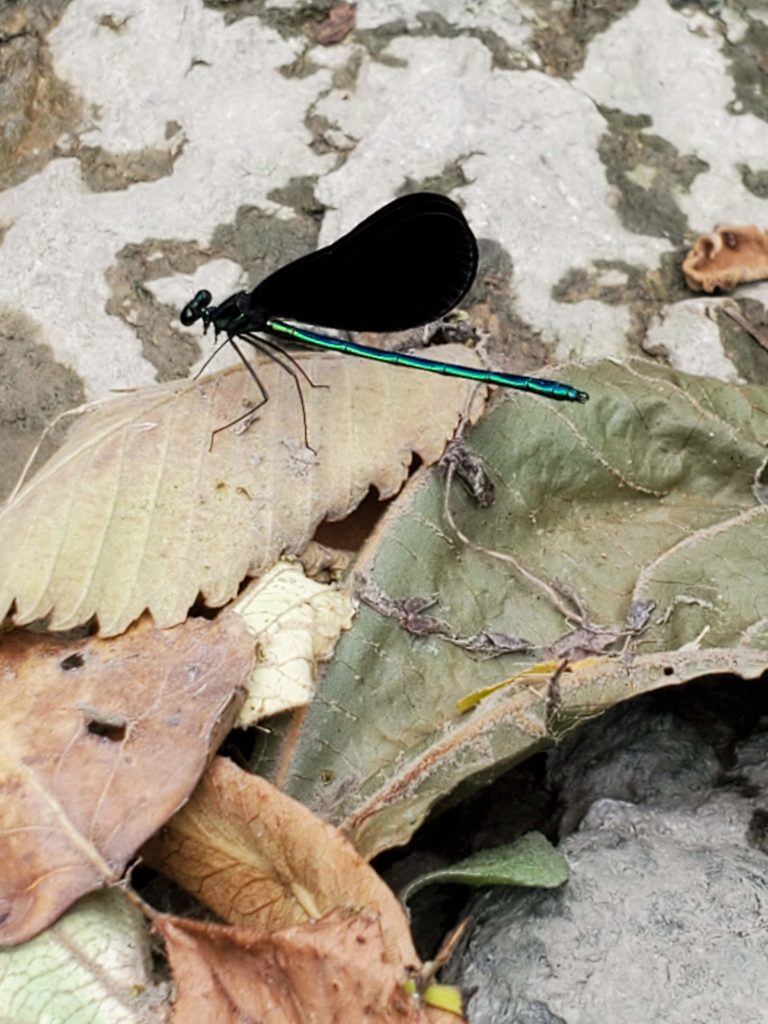
Ebony jewelwing damselfly – one of many found near the water.
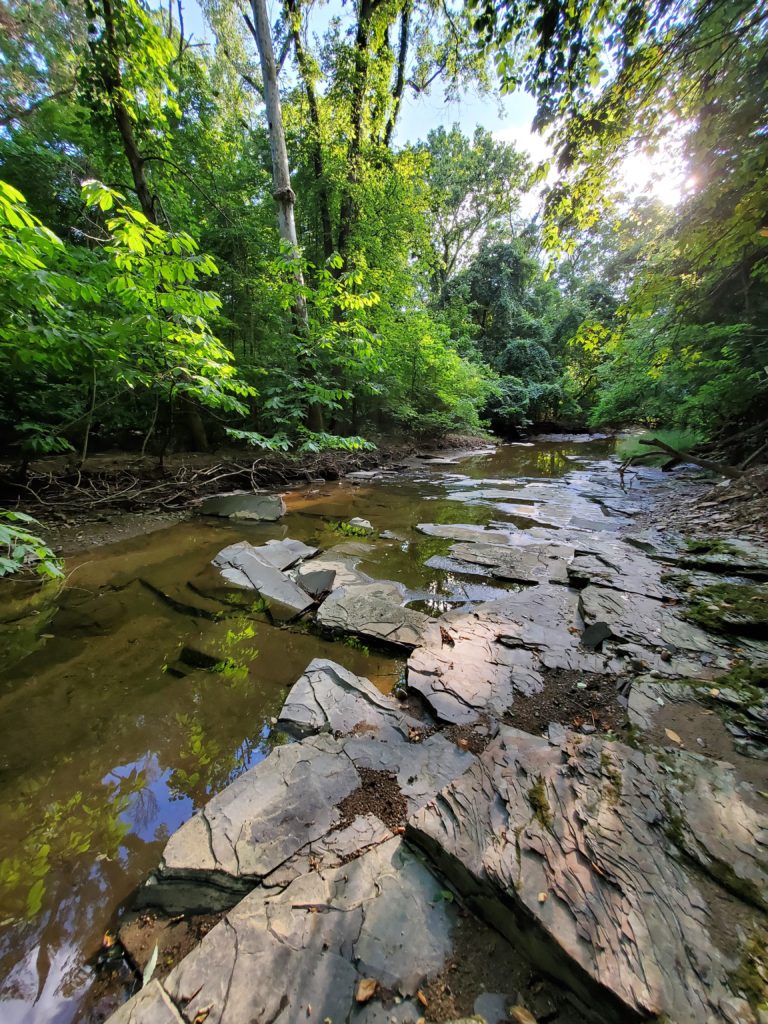
Much of the stream bed is lined with shale. A paw paw grove can be seen on the left.
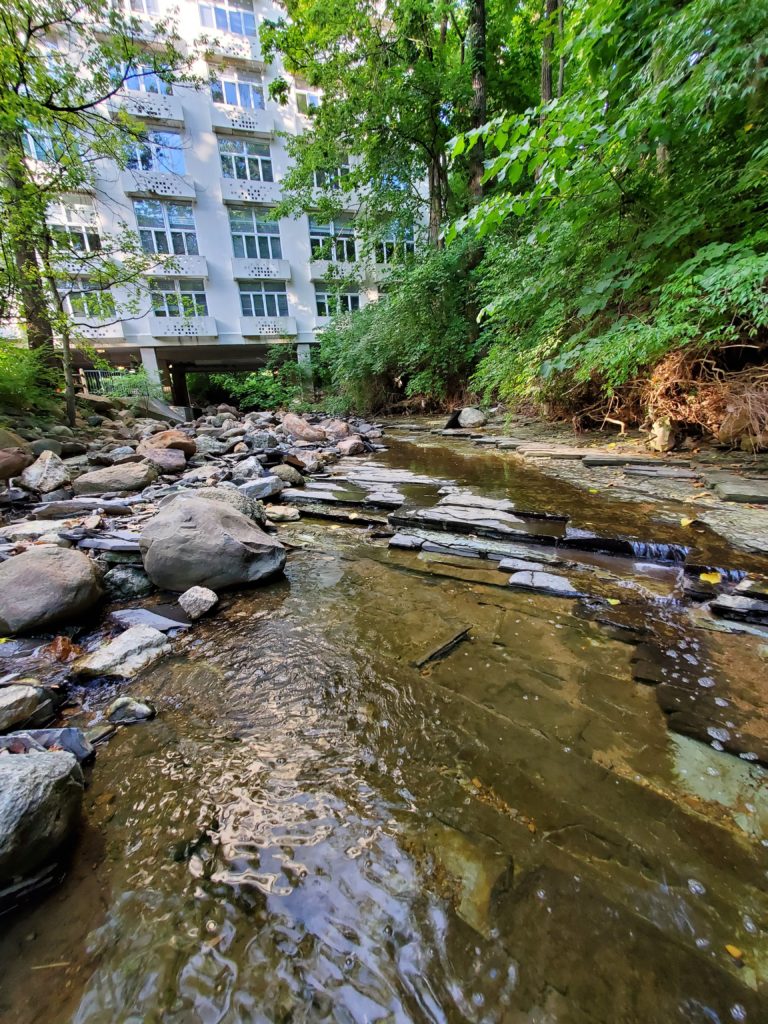
The stream actually passes under Wesley Glen. See Ravinia Spring/Summer 2020 for an article about Wesley Glen’s appreciation of this lovely stream in their back yard.
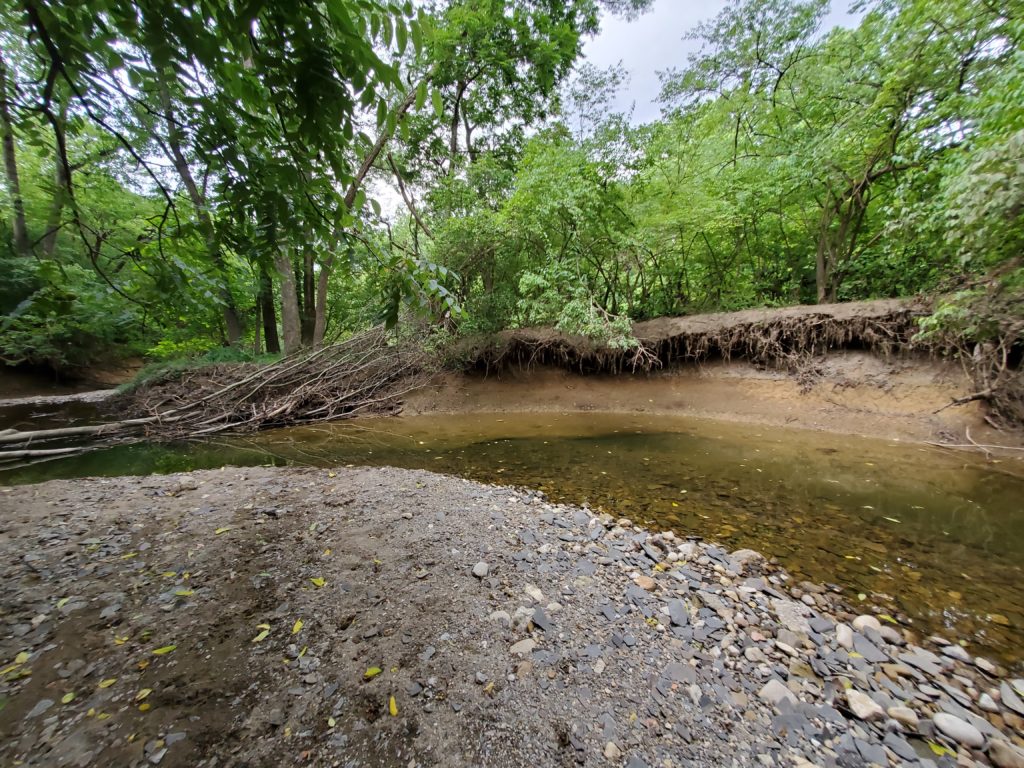
At the end of Bill Moose Run, erosion is changing the shape of the mouth of the stream by undercutting the banks.
The Award Ceremony for the Sixth Ravine Art Contest was held on February 24, amid a mix of teachers, student artists and their families. Nearly 90 works were on display at the Northwood ARTSpace; the largest number of entries in Ravine Art Contest history. Among the entries were painted landscapes, wildlife prints, photography, haiku poetry and plenty of owls. The contest for K-12 students in Franklin County has been successful for us in spreading our message of ravine protection and restoration. Some art entries have focused on common ravine problems such as litter, invasive species, and dwindling habitat.
The variety and creativity of Contest entries continues to impress audiences during each annual gallery exhibit. Each year, students submit artwork that captures a melding of nature and science with art. Some students from the Columbus Gifted Academy submitted wonderful bird mono-prints, some adorned with spectrograms (a visual scientific notation) for the vocalization of specific bird species. At first glance, these spectrograms are reminiscent of the reddish ownership stamps commonly seen on Japanese prints. In a collaboration with the Grange Insurance Audubon Center, students selected a bird species and learned about their habits and habitat, then created artworks that were submitted to the Contest.
This mono-print of a screech owl entitled Glowing Night Eyes is by sixth grader Lucia Dipaola of Columbus Gifted Academy. His favorite ravine is at Hayden Run.
_______________
Many people contributed to make the contest a success. Many thanks to Linda and Eric Burden for being key donors underwriting school prizes and exhibition expenses. This year, our panel of judges included Amy Youngs, an environmental artist and assistant professor in OSU’s Department of Art, and Maria Juranko of the Wexner Center of the Arts. These jurors volunteered their expertise in selecting winners from each grade category.
A number of organizations supported the contest by donating items to include in student prize packages including Blick Art Materials, REI, Sierra Club Central Ohio Chapter, Columbus GreenSpot and Half Price Books. Still others volunteered their time and labor to help install the exhibit, print student certificates (Mid-Ohio Regional Planning Commission) and close out the gallery exhibit and returning the artwork to student artists. Thanks to all of these individuals and organizations for supporting the Ravine Art Contest.
Friends of the Ravines was proud to award student and the corresponding school prizes for the following categories:
Visual Art Grades K-2 – Lilly Sagraves, a kindergartner from Georgian Heights Alternative Elementary for her bird collage
Visual Art Grades 3-5 – Fifth grader Alayiah Taylor-Mitchell, from Westgate Elementary School for her decorative squirrel with an acorn
Poetry Grades 3-5 – Fifth grader Jesse Imler, from Georgian Heights Alternative Elementary School for her illustrated haiku entitled Winding Hallow
Visual Art Grades 6-8 – Sixth grader Nora Hagen of Indianola Informal K8 School for her landscape created with watercolor and gel pen entitled Ravine Dream. Her favorite ravine is Walhalla Ravine.
Visual Art Grades 9-12 – Ninth grader Eduardo Varona attends Independence High School. His entry, River, was created with pencil and employed blending and shadowing favored by judges.
At the Award Ceremony, student artist Hunter Johnson, of Columbus Gifted Academy provided a detailed account of the brush work and blending he used to create his landscape painting of a waterfall entitled “Snowy Night.” According to his entry form, he was “inspired by Bob Ross by his working with the flow and the happy little trees.” Hunter is in fifth grade and his favorite ravine is Glen Echo Ravine.
Friends of the Ravines is proud to announce our 6th Ravine Art Contest: Artwork Inspired by Franklin County Ravines,” a contest for students in Franklin County Ohio. Entries of poetry and 2D art will be accepted for four grade categories including elementary (K-2) and (grades 3-5), middle school (grades 6-8), and high school (grades 9-12). All entrants, friends, families and teachers are invited to attend an Award Ceremony at the Northwood ARTSpace, 2231 N. High Street, on February 24, 2017. Prizes will be awarded to first-place winners in each grade category. Winning works and selected entries will be publicly exhibited at the Northwood ARTSpace during February and March 2017.
Olabisi Peters, Columbus Gifted Academy, grade 8
Contest Rules
Contest Judging
Entries will be judged by artists and/or former teachers from the central Ohio area. The judges will evaluate technical ability and creativity as it relates to the “Artwork Inspired by Franklin County Ravines” theme. Depictions of ravines must have appropriate ravine inspiration, and be tastefully rendered. Friends of the Ravines reserves the right within their complete discretion to disqualify any entries that may be deemed unsuitable for public display.
Optional: Contestants may choose to attach a brief statement (50 words max.) about their medium, subject, interpretation, favorite ravine, or any other information they feel is relevant to judging.
Contest Awards
Public Art Exhibition
Return of Artwork
Artwork may be picked up at the Indianola Informal K-8 School after March 31, 2017. Teachers or parents may submit a stamped and self-addressed envelope for the return of entries. Friends of the Ravines is not responsible for artwork not picked by May 2, 2017. Please call the Indianola Informal K-8 School at 251 E. Weber Rd. for hours at (614) 365-5579.
The 2017 Ravine Art Contest is made possible through the generosity of individual donors.
Since the rain closed the stage at ComFest, and Alice didn’t get to tell the crowd what the generous ComFest grant money does for Friends of the Ravines, we decided to make a little video to thank ComFest. Here, Alice Waldhauer thanks ComFest and explains that their grant money supports the continued publication of our newsletter, Ravinia.